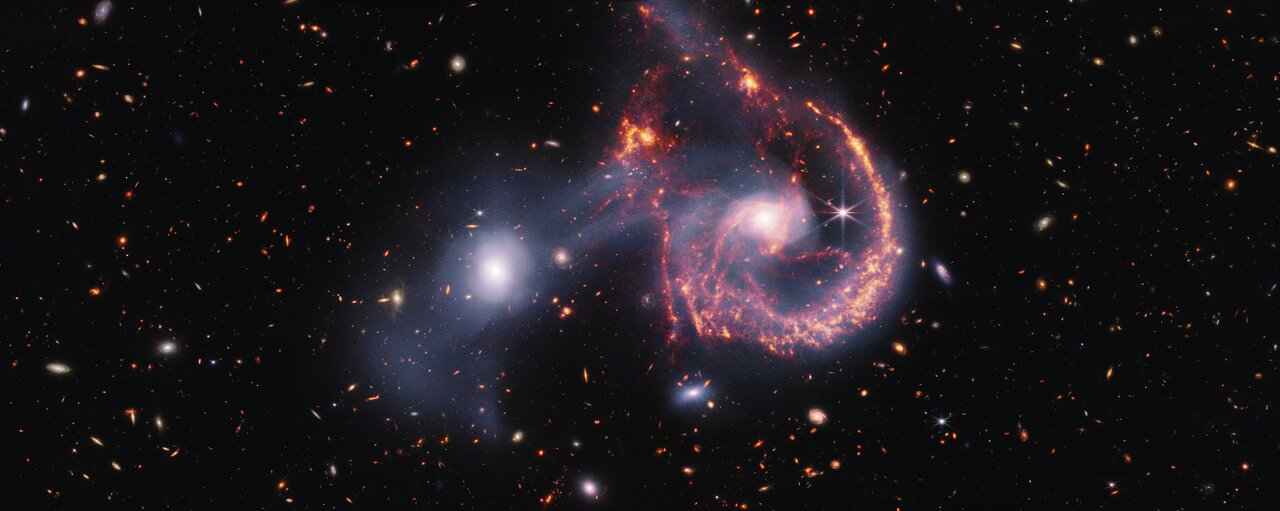WEBB's crazy zoom into a huge galactic collision in Arp 107
Posted: Fri Sep 20, 2024 6:43 pm
Webb Telescope provides another look into galactic collisions
phys.org | Original release 2024 September 18
BSN4Y Jac
phys.org | Original release 2024 September 18
Crazy zoom in: https://esawebb.org/images/weic2423a/zoomable/
- This composite image of Arp 107, created with data from the JWST's NIRCam and MIRI reveal a wealth of information about the star-formation and how these two galaxies collided hundreds of million years ago. The near-infrared data, shown in white, shows older stars, which shine brightly in both galaxies, as well as the tenuous bridge of gas and stars that runs between them. The vibrant background galaxies are also brightly illuminated in this wavelength. On the other hand, MIRI data shows the young stars and star-forming regions in vibrant orange and red. Our view in the mid-infrared provides the best view of the collision point, given the noticeable gap at the top of the spiral galaxy. Credit: NASA, ESA, CSA, STScI
[...]
The region has been observed before in infrared by NASA's Spitzer Space Telescope in 2005. However, NASA's James Webb Space Telescope displays it at much higher resolution. This image is a composite, combining observations from Webb's MIRI (Mid-Infrared Instrument) and NIRCam (Near-Infrared Camera).
[...]
NIRCam highlights the stars within both galaxies and reveals the connection between them: a transparent, white bridge of stars and gas pulled from both galaxies during their passage. MIRI data, represented in orange-red, shows star-forming regions and dust that is composed of soot-like organic molecules known as polycyclic aromatic hydrocarbons. MIRI also provides a snapshot of the bright nucleus of the large spiral, home to a supermassive black hole.
[...]
The spiral galaxy is classified as a Seyfert galaxy, one of the two largest groups of active galaxies, along with galaxies that host quasars. Seyfert galaxies aren't as luminous and distant as quasars, making them a more convenient way to study similar phenomena in lower energy light, like infrared.
[...]
This galaxy pair is similar to the Cartwheel Galaxy, one of
the first interacting galaxies that Webb observed. Arp 107 may have turned out very similar in appearance to the Cartwheel, but since the smaller elliptical galaxy likely had an off-center collision instead of a direct hit, the spiral galaxy got away with only its spiral arms being disturbed.
[...]
Arp 107 is located 465 million light-years from Earth in the constellation Leo Minor.
[...]
... read more
BSN4Y Jac
